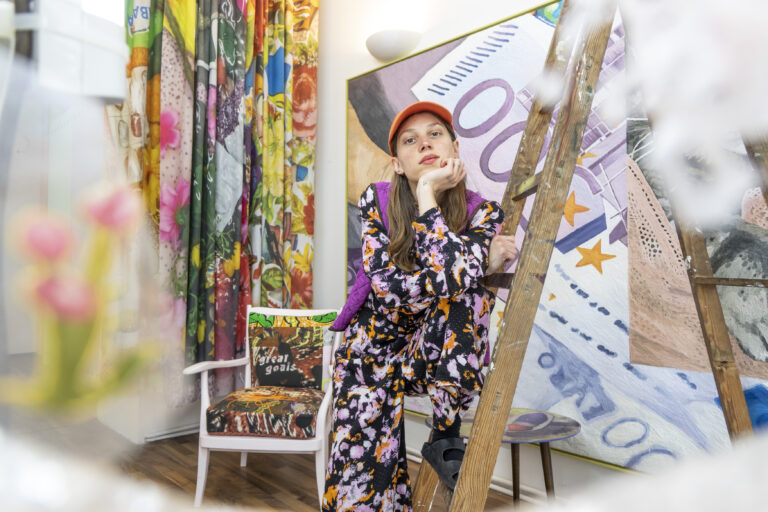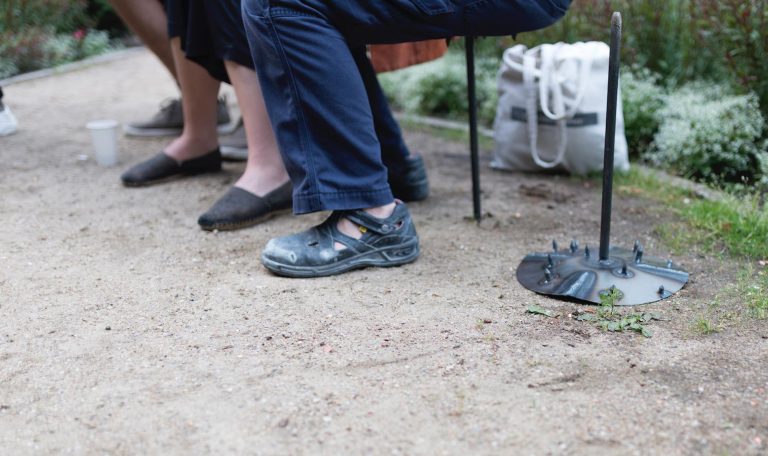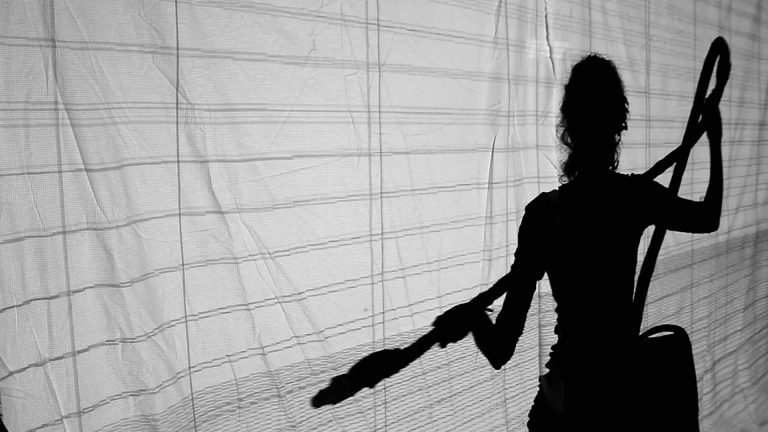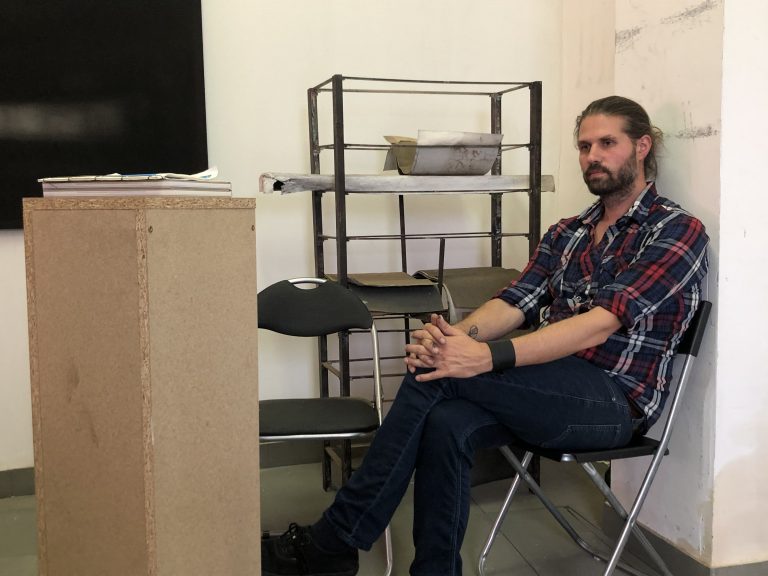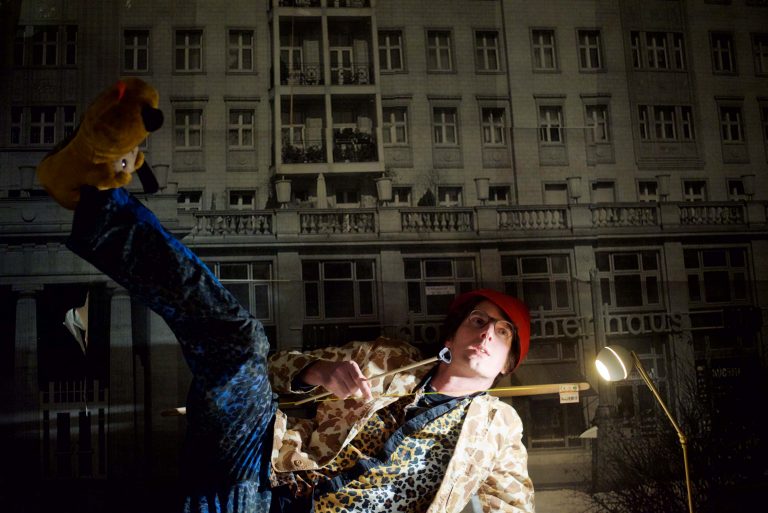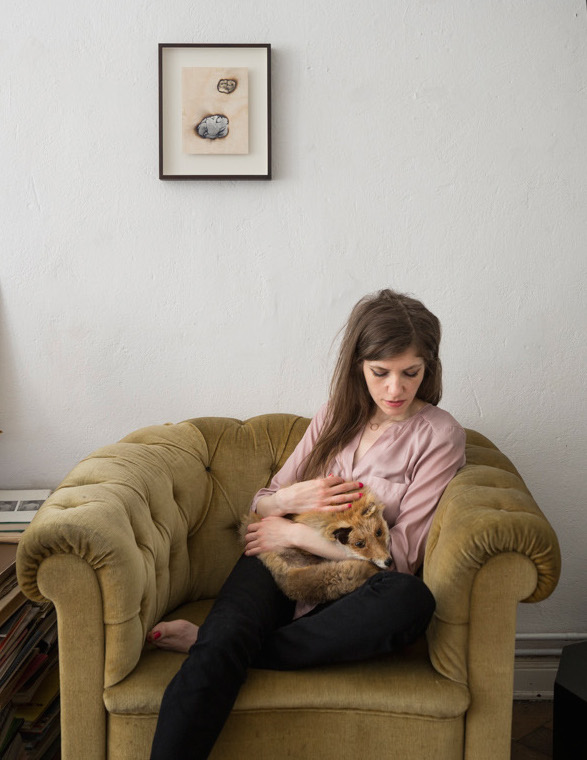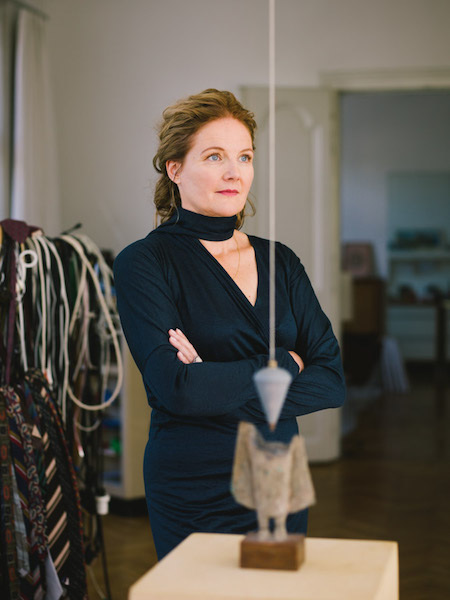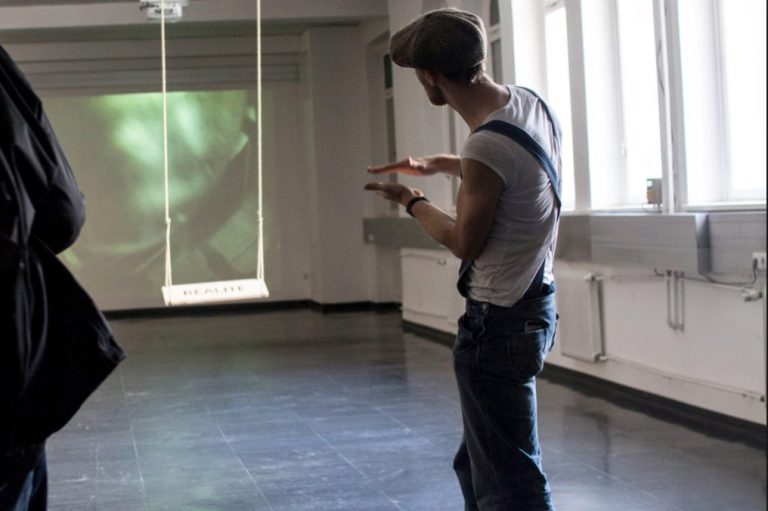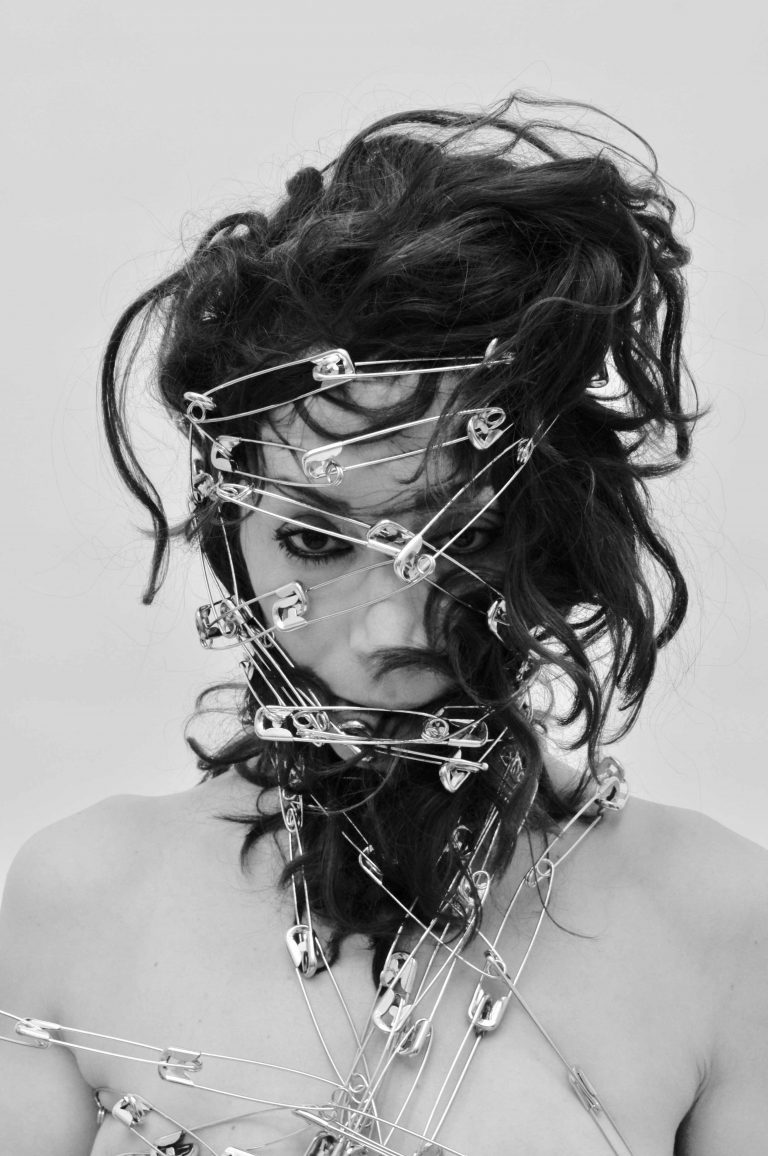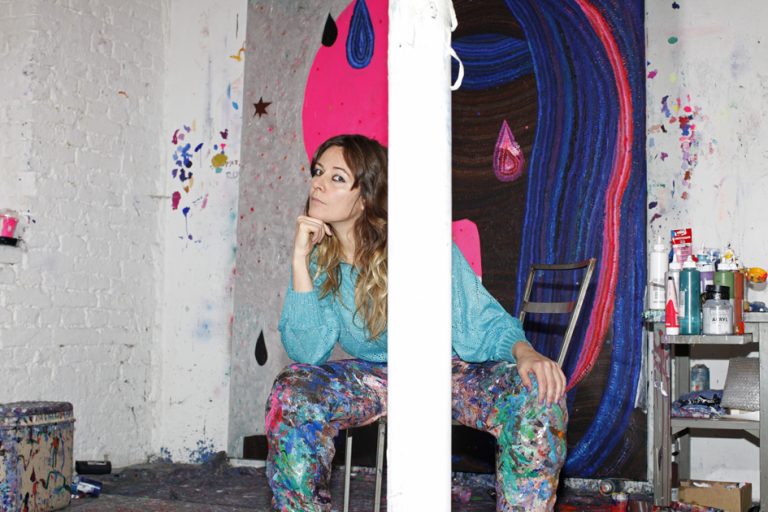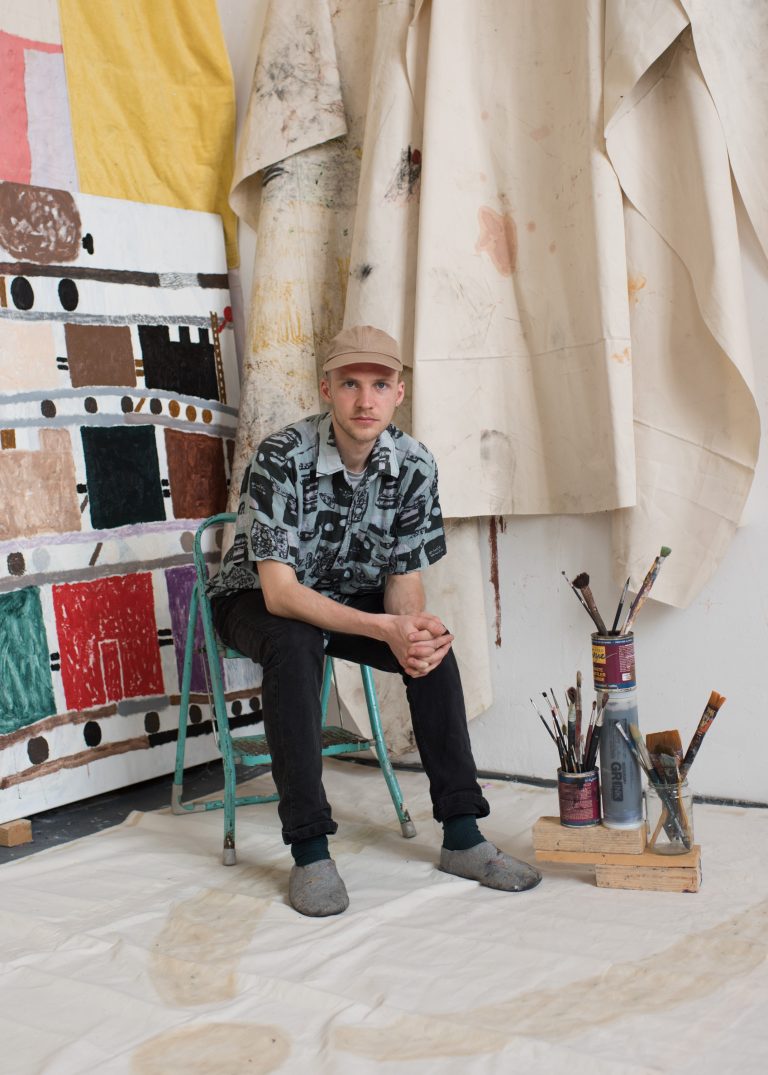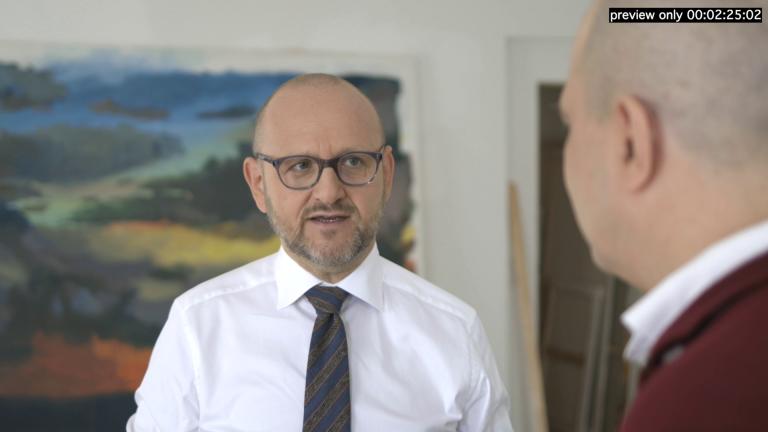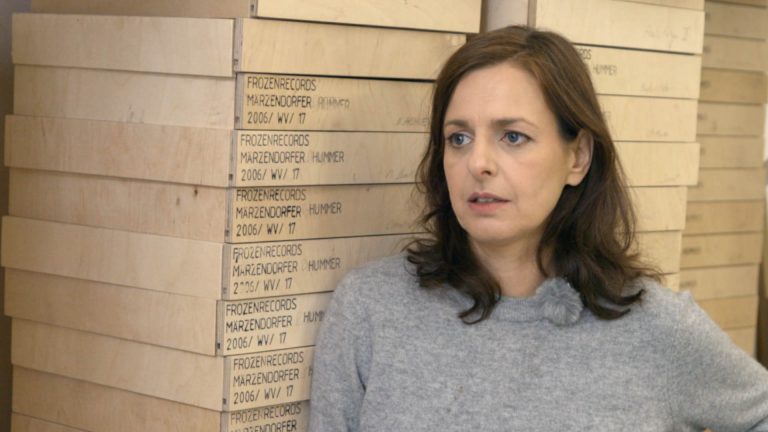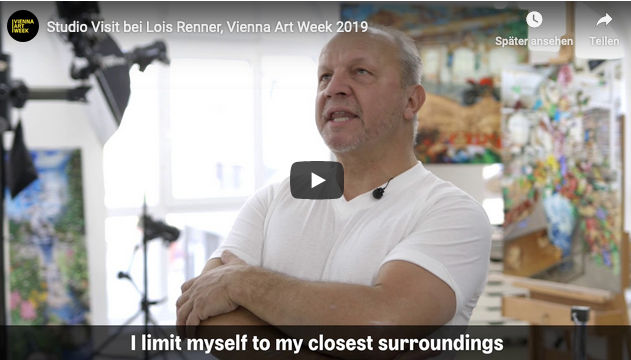Julianne Cordray in Conversation with Katharina Aigner
As part of the Critic in Residence Program by studio das weisse haus in cooperation with VIENNA ART WEEK 2020 I had the chance to talk with Katharina Aigner, whose research- and performance-based practice visualizes often invisible, unheard lesbian stories ç her(stories) – and mines historical narratives from a queer-feminist perspective. We met up in her studio for tea, while she told me about her current, in-progress video work, “I sketched, barely visible in pencil, our walk in her notebook …”
Hung on the wall above her desk are a couple of printouts of drawings. They are fictive scenes, which were produced at the Ravensbrück women’s concentration camp during the Nazi regime – a barbed-wire fence running horizontally across the top of the images provides a reference for the setting. However, the images also depict what would have been impossible scenes of lesbian love, desire and companionship. These drawings are the point of departure for Aigner’s latest project – a next step in her ongoing research.
“What I am thinking about right now are questions around how to tell nonexistent stories, how to challenge the limits of documents, and how these very opaque stories can challenge our way of looking at history and underline the importance of revisiting the archive,” Aigner explains.
On top of her desk and on an adjacent table, books are neatly arranged, post-its peering out around their edges. It’s an aesthetic that also comes through in her video work “Ohne Titel (Bücher; Flurstücke 313, 314, 317, 318, 103/2,109)” from 2019, which begins with a pair of hands flipping through post-it-marked pages of several books, lingering on passages long enough for viewers to read them. In the studio, the books currently at hand are primarily connected to her research for the new work. Including reference material related to the telling of stories through fragmented documents and images, such as “Wayward Lives, Beautiful Experiments: Intimate Histories of Riotous Black Girls, Troublesome Women, and Queer Radicals” by Saidiya Hartman; as well as literature directly referencing the women who were deported to the concentration camps.
In her current project, Aigner is weaving speculative narratives related to the lives of these women, based on the drawings, assorted documents and letters – which, though containing some biographical elements, are themselves speculative in nature. From this material, individual everyday objects will be brought into focus through close-up, haptic visuals – fragments of a non-existent archive. Aigner is working with programmers to build digital renderings to bring the objects of this archive to life. It’s a fairly recent direction in her work, first emerging in the video “20 Rue Jacob” (2018), in which animation was used out of necessity to recreate, or imagine, a visit to Temple d’Amitié (Temple of Friendship) in Paris, the former home address and salon of writer Natalie Clifford Barney – a site that is not accessible to visitors.
In our conversation, we talked about this use of digital rendering and animation to bring otherwise invisible or empty spaces to life; the different modes of haunting that come into play in the re-imagining of her(stories); and more:
In your two recent videos, “20 rue Jacob” and “Ohne Titel (Bücher; Flurstücke 313, 314, 317, 318, 103/2,109)”, even when the body is not visible, or only partially visible, it remains present as a vehicle through which to explore certain (her)stories – whether through the sound of footsteps, the sways of the camera, hands turning pages, etc. I wanted to ask about this choice to keep the body present and connected in this way (even in the digital rendering in “20 rue Jacob”) and how this might also relate to a particular aesthetics of research you are exploring in your work.
My work is subjective in its nature, reassembling how I interact with queer places and stories. It’s my personal way through diverse historic archives that is made visible in the performative aspects of the works that you describe. Objects, fragments of text marked by post-its, films, and photographs leave a pathway of my personal interactions with these narratives, however, it is important to me to install these as open systems, inviting the possibility of many different versions. At the core of all of my recent works is a practice of close re-reading and re-imagining. It’s speculative and therefore never attempts to be objective. However, it is also a politics of the gaze that makes it important to me to have a body present in the work; it questions not only what is told, but who is telling these stories.
I was interested in the style of digital animation used in “20 rue Jacob”. The architecture seems to come alive as it is approached – lines and patterns emerge on walls, floors and doors, and windows and doors open on their own. It seems as though the place itself is a performing body. Could you perhaps share some insight into this approach?
The temple of friendship that lies at the centre of the rendering “20 rue Jacob” is inextricably connected to the salonist and writer Natalie Clifford Barney and the circle of lesbian artists that she surrounded herself with. The temple still exists, but is entirely shielded from the public. The inaccessibility of places or documents is a frustrating but common occurrence in queer historical research. Queer narratives are here but they need care and attention to be unearthed. The rendering is imagined from fragments of text, old photographs, memories – a makeshift archive – serving as the blueprint for this animated model. With the camera moving through it, its gaze is activating this place into being. The architecture reveals itself with the gaze that is placed upon it. However, as we move along this shows itself to be a reciprocal relationship, it is not clear if we are activating the space or if the architecture is activating us into motion. There is an archive looking back.
You talk about opaqueness and its potential as productive and fruitful ground for queer (her)stories. I wondered what role hauntology – the presence of traces from the past within the spaces you explore – plays for you in opening up discussion of possible future narratives/storytelling.
Thinking in terms of hauntology, there are two different preconditions for haunting that manifest itself in my work. While the claim that the injustice caused by a sexist and homophobic history of reception has been overcome demands a re-reading and re-activating of the lesbian art and literature scene of 1920s Paris (Natalie Clifford Barney, Renée Vivien, Lucie Delarue-Mardrus, Djuna Barnes….), it is the negation of the extent of the violence itself that serves as the prerequisite for my newest works’ spectral qualities. In both cases, unfinished or fragmented pasts are at the core, troubling the places they are entangled with. To me, working with opaqueness in a historiographic context means imagining a practice that deals with the spaces left vacant or forgotten by mainstream narratives with the purpose of transcending a mere filling in the gaps to tell non-linear, ambiguous stories that challenge our current views of history.
As I watched “20 rue Jacob” and “Ohne Titel (Bücher; Flurstücke 313, 314, 317, 318, 103/2,109)”, I also thought about psychogeography – exploring the emotional and psychological effects spaces and geographical locations have on us, also tied to individual and collective memory, history, etc. Related to this, in thinking about “I sketched, barely visible in pencil, our walk in her notebook …” (2020), I also thought about the connection that we have to objects – our affective attachment to objects (including those we might find in an archive). And I wondered what your thoughts are on this, and how our affective connection to these objects changes when they are not tangible or are imagined/fictional, as well as how this affective attachment might be transferred.
I visited Ravensbrück last year while researching Nadine Hwang, who was deported there in 1944 under unexplained circumstances. Going through their permanent exhibition, I found myself to be very moved by the artifacts on display. Objects we find in archives lie at the intersection of memory and history. They are allowed to be deeply personal, quotidian items, while being placed in a historical context. This makes them both witnesses as well as vessels for storytelling across time.
Thinking in terms of lesbian history, especially in the context of the Nazi Regime, such archives are often missing. They are muted by ongoing homophobia, destroyed documents, a lack of self-testimonials from women* and the difficulty of findingwitnesses that are willing to talk about the subject of homosexuality, therefore, making the stories of lesbian women* inaccessible. So how can these narratives be told anyway? What is to be done in the absence of factual archives?
My new work, “I sketched, barely visible in pencil, our walk in her notebook …”, an essayistic video animation, deals with the search for artifacts, in relation to lesbians imprisoned in concentration camps. The stories of the protagonists are told through imagined rendered artifacts that appear and disappear in the frame. A notebook, a ring, a comb… ambiguous clues that become the starting point for a new speculative archive that stresses the importance of objects for telling marginalized stories. Showing objects in relation to queer protagonists, even if they are speculative in their origin, is one way to give voice to queer narratives from the past and letting them inform the present.





